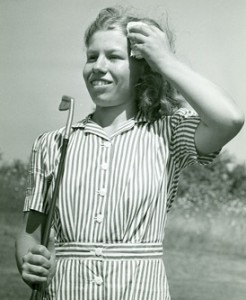By
Mr Alexander M Wood, Orthopaedic Registrar Wansbeck Hospital Ashington
Mr Andre C Keenan, Orthopaedic Registrar Royal Infirmary Of Edinburgh Little France
Mr Stuart A Aitken Orthopaedic Registrar Royal Infirmary Of Edinburgh Little France

We thank Dr’s Iain and Andrew Murray and Dr Roger Hawkes for their blog1 Getting to Grips with Golf Injuries,which addresses some issues that surround amateur and professional golfers. We believe that within this article there is an important message, which should be seized upon.
Whilst there is a decent amount in the literature looking at professional golfers2,3,4,5, possibly due in part to the financial incentives for these patients to avoid injuries and carry on playing. There are very few high quality studies identifying the types of injuries sustained in the amateur golfer and the cause behind these studies. The majority of available papers are retrospective, 6 often with poor response rates. This leads to significant bias in terms of recall, and in the self-analysis as to the causative nature of the injuries, which may not be accurate. This could be improved by prospective research, which may reduce recall bias, combined with a prospective video assisted analysis of golfers’ swings prior to injury, which may help identify if this is a causative factor.
Attempting to capture decent data on amateur athletes is a challenge. One difficulty is that you often do not have a defined group of participants. Whilst prospective studies have attempted to address this7,by looking at club golfers there is still selection bias, as you miss the ‘occasional’ golfer.
One importance of capturing all participants is that some occasional golfers may have poorer technique than their regular playing counterparts, and are therefore perhaps prone to injury8,. These less-skilled golfers are an important sub-group in the analysis of injuries but difficult to identify. We have tried to address this lack of information in other sports9,10,11,12 but we have only looked at fractures, which are easy to identify as they all need treatment at a hospital. Soft tissue injuries, on the other hand, are difficult injuries for which to to get accurate epidemiological information beyond small snapshots.13,14.
What last month’s blog (Getting to Grips with Golf Injuries) does extremely well is highlight the requirement for a well-designed study to capture all golf related injuries sustained in the amateur golfing population. We suggest that a prospective study could have a study arm looking at golf swing technique taken at the start of the golfing season, and an analysis of its association with golfing injuries. It should also have outcome measures that identify the impact that injuries have on the ability to return to golf. At the same time it should have an outcome measure that assesses how these injuries impact on participants occupations, which is probably as important to the amateur golfer.
We believe that the important message, about the requirement for information surrounding the injuries sustained by the amateur and occasional sports participants is not unique to golf. Information about the effect of sport on the masses and the injuries they sustain is every bit as important as information about treating professionals. We underscore that findings in elite/professional athletes are not always directly transferable to amateur athletes.
References
1 Murray IR, Murray AD, Hawkes RA. Getting to Grips with Golf Injuries. BJSM Blog 2013:07/15
2 Vad VB, Bhat AL, Basarai D, Gebeh A, Aspergren DC, Andrews JR. Low Back Pain in Professional Golfers. The Role of Associated Hip and Low Back Range-of-motion Deficits. American Journal of Sports Medicine 2004 32(2) 494-497
3 Smith MF, Hillman R. A retrospective service audit of a mobile physiotherapy unit on the European Golf Tour. Phys Ther Sport 2012;13(1):41-4
4 Lindsay D, Horton J. Comparison of spine motion in elite golfers with and without low back pain. J Sports Sci 2002;20(8):599-605
5 McDonald JE, Herzog MM, Phillippon MJ. Return to play after hip arthroscopy with microfracture in elite athletes. Arthroscopy 2013; 29(2):330-5
6 Batt ME. A survey of golf injuries in amateur golfers. Br J Sports Med 1992;26(1):63-5.
7 McHardy A, Pollard H, Luo K. One-year follow-up study on golf injuries in Australian amateur golfers. American Journal of Sports Medicine 2007; 35(8):1354-60
8 Renstrom P, Johnson RJ. Overuse Injuries in Sports. Sports Medicine 1985; 2:316-333
9 Court-Brown CM, Wood AM, Aitken S. The Epidemiology of Sports-Related Fractures in Adults. Injury 2008; 39(12):1365-72
10 Wood AM, Robertson GA, Rennie L, Caesar BC, Court-Brown CM. The epidemiology of sports-related fractures in adolescents. Injury 2010; 41(8):834-8
11 Robertson GA, Wood AM, Bakker-dyos J, Aitken SA, Keenan AC, Court-Brown CM. The epidemiology, morbidity, and outcome of soccer-related fractures in a standard population. American Journal of Sports Medicine 2012; 40(8):1851-7
12 Robertson GA, Wood AM, Heil K, Aitken SA, Court-Brown CM. The Epidemiology, morbidity and outcome of fractures in rugby union from a standard population. Injury 2013; 0020-1383(13)00269-6
13 Wood AM, Keenan AC, Arthur C, Wood IM. Common training injuries concerning potential Royal Marine applicants. J R Nav Med Serv. 2011;97(3):106-9
14. Hammond T, Wood AM. Injuries and Medical Issues on the Zambezi “Great River” J R Nav Med Serv. 2013; 99(1):25-28
********************************************
Questions and queries? Please contact Mr Alexander M Wood: drsandywood@googlemail.com